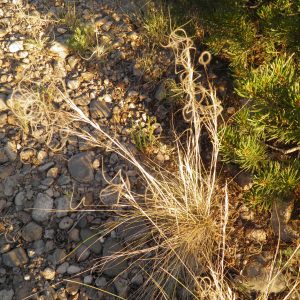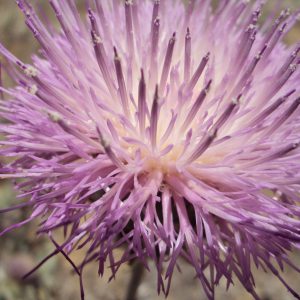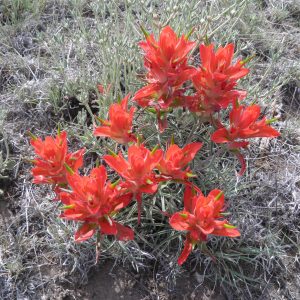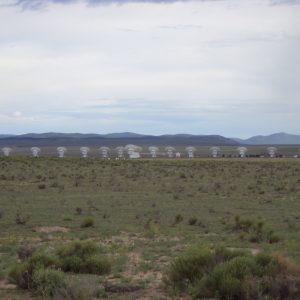This past week was my twelve week of adventures in the south to central, western portion of New Mexico. That’s right, the borders of our SOS collection region are rather loosely defined, but with good reason. Our explorations have taken us to many BLM-managed bordering areas of the Colorado Plateau in this state. The reason for this being that populations transitioning from one ecoregion to another often possess survival-enhancing genetic qualities that increase the chance for success when using their germplasm in restoration efforts. Nifty little tidbit of info, especially given an uncertain climate future, one that may entail widespread changes in ecosystem conditions currently and historically equilibriated to make habitats tolerable for native plants. Pretty important.
Speaking of climate, the weather in this part of New Mexico has been changeable enough for me to actually consider writing this blog as a lyrical poem entitled “Ode to Climate Dynamics.” Given the dramatic swing from cool spring nights to 105 degree heat, the arrival of flash flood advisories, knock-your-socks-off winds, and torrential downpours (otherwise known as the North American Monsoon) has actually been a blessing in disguise, bringing cooler temperatures and cloudy skies. Besides, life is not about waiting for the storm to pass…ah, you known the rest. Just try not to get hit by a bolt of lightening while you’re dancing in the rain.
So far, we’ve ventured to just about enough blocks of accessible BLM land to represent our entire region. The trick to finding both high diversity and abundance appears to be finding locations that are not as accessible to grazing and that have received adequate rainfall within the past several months. Some of the most promising areas include those along the Quebradas Byway (just east of Socorro), several near Pinos Altos and Gila, NM, and a few in Walnut Creek (southwest of Socorro). Most weeks, we go out into the field for four days and camp to save travel time. I’ve seen and experienced an amazing array of landscapes the likes of which I have never encountered in the twelve years I have lived here, ranging from the Chihuahuan Desert with its wildlife and associated nighttime hisses, hoots, and screeches to the Gila Wilderness with nights so quiet that your ears buzz. And still, no matter where I am, the concept of seeing stars not obscured by city lights is a dim thought in the background when faced with the actual sight itself.
This is the first twelve weeks of the first year of the SOS team out of Los Lunas, NM and this is my second post. These two have one thing in common, aside from the initially hilarious and newbish attempts at coordination of efforts toward a meaningful output on my part.
Growth. That’s what they have in common. This internship has contributed not only to a constantly pooling reservoir of experience-based knowledge of botany and, more specifically, botany in this area, but also to an immeasurable amount of character growth. It almost sounds cliche, but it must be said. So far, much of our work has involved building a strategy from the ground up, and it has proven confusing and often frustrating at points, but we are met with much success. Luckily we have had an incredible amount of assistance from several highly-skilled individuals at the Chicago Botanic Garden and mentors involved in SOS teams in different parts of the state. If you’re reading this, you know who you are. Much thanks, we are in your debt.
And how is growth related to this blog? Well, I guess…I have more to say than last time…
But, back to the point, since we’ve begun, we have developed a database of hundreds of identified species of plants we’ve observed at over forty sites and have collected vouchers from. Having this information has allowed us to narrow our focus to the most accessible sites with the highest likelihood of multiple, large collections. The herbarium at the University of New Mexico, with their enormous collection of specimens, has been exceptionally helpful toward this goal. A grip of what is out there and where it is was something we lacked initially. And now that we have it, monitoring these populations and returning at the right times has been much more straightforward. Thus far, we have made three collections (Hesperostipa neomexicana, Phacelia integrifolia, and the ever-abundant Chaetopappa ericoides.) We have our eye on some other species that align with a priority list we’ve compiled based on the intel of several of the area’s leading botanists (again, thank you.) So far, we haven’t observed any populations of these species that are ready for collection. It almost seems as though this year, seed production has been a bit delayed or lengthened. I suspect this has something to do with the heat wave that occurred during the months of May, June, and July this year and perhaps also with a slightly-delayed monsoon season.
However, this past week we visited several sites west of Quemado, NM just outside the Apache-Sitgreaves National Forest on some surprisingly un-cow-burnt BLM land, and several of the populations we observed there are very close. The seed is still a little soft and we will return soon.
We have also been fortunate to obtain a permit to collect in the Santa Fe National Forest, so next week we will head up to forest service-managed land near Cuba, NM to see how things are progressing there and, hopefully, find some germplasm that is ready to be collected.
Tessia Robbins
Los Lunas PMC, NM
- Hesperostipa neomexicana (New Mexico feathergrass)
- Cirsium sp. (Thistle)
- Castilleja integra (wholeleaf indian paintbrush)
- Very Large Array (VLA) near Socorro, NM




